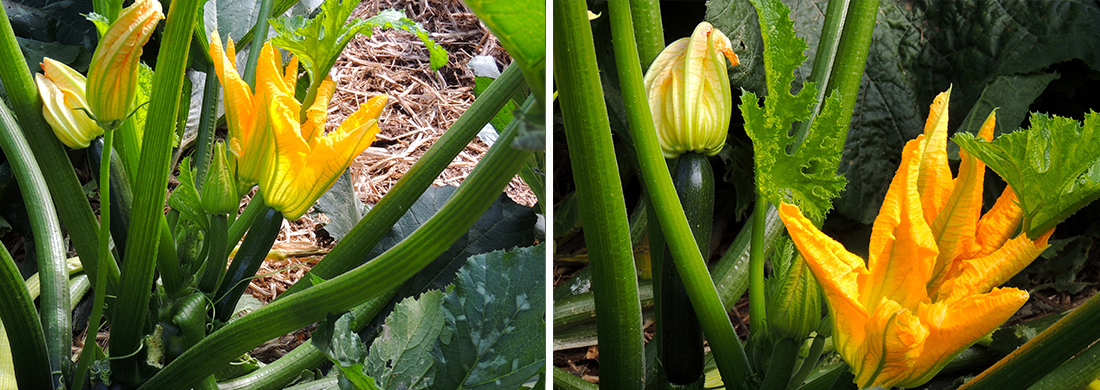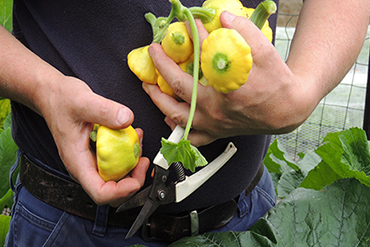
Golden Nuggets from the New World
- Kitchen Garden
The early morning summer harvest always evokes a sense of joy, wonderment and culinary excitement. Within minutes the basket is full of zucchini, button squash, eggplants, a traffic light collection of capsicums - red, green and yellow orange - chillies and an abundance of tomatoes and basil. The next culinary journey will be inspired by the flavours of the Mediterranean or with a touch of turmeric and coriander seeds - the Middle East.
Hunting through the cucurbita garden bed is full of surprises. There are nubile zucchinis - more flower than zucchini - perfect for the delicate Italian speciality, stuffed zucchini flowers. There are supersized ones.Undetected for a few days, they keep growing, growing and growing, longer and longer and wider and wider. They are best relegated to the soup pot. Then there are the ones that are just right to be stuffed, pan fried, grilled, roasted and for something special - pickled zucchini.
 But best of all though is uncovering the golden nuggets. With artisan inspired scalloped edges they snuggle deep within the gargantuan green foliage of the button squash plant for protection. The spiky stems and leaves ward off the critters well enough although they are no matchgardeners hands. As I move though the leaves they scratch and irritate my hands and arms. There is a temporary price to pay for the golden harvest.
But best of all though is uncovering the golden nuggets. With artisan inspired scalloped edges they snuggle deep within the gargantuan green foliage of the button squash plant for protection. The spiky stems and leaves ward off the critters well enough although they are no matchgardeners hands. As I move though the leaves they scratch and irritate my hands and arms. There is a temporary price to pay for the golden harvest.
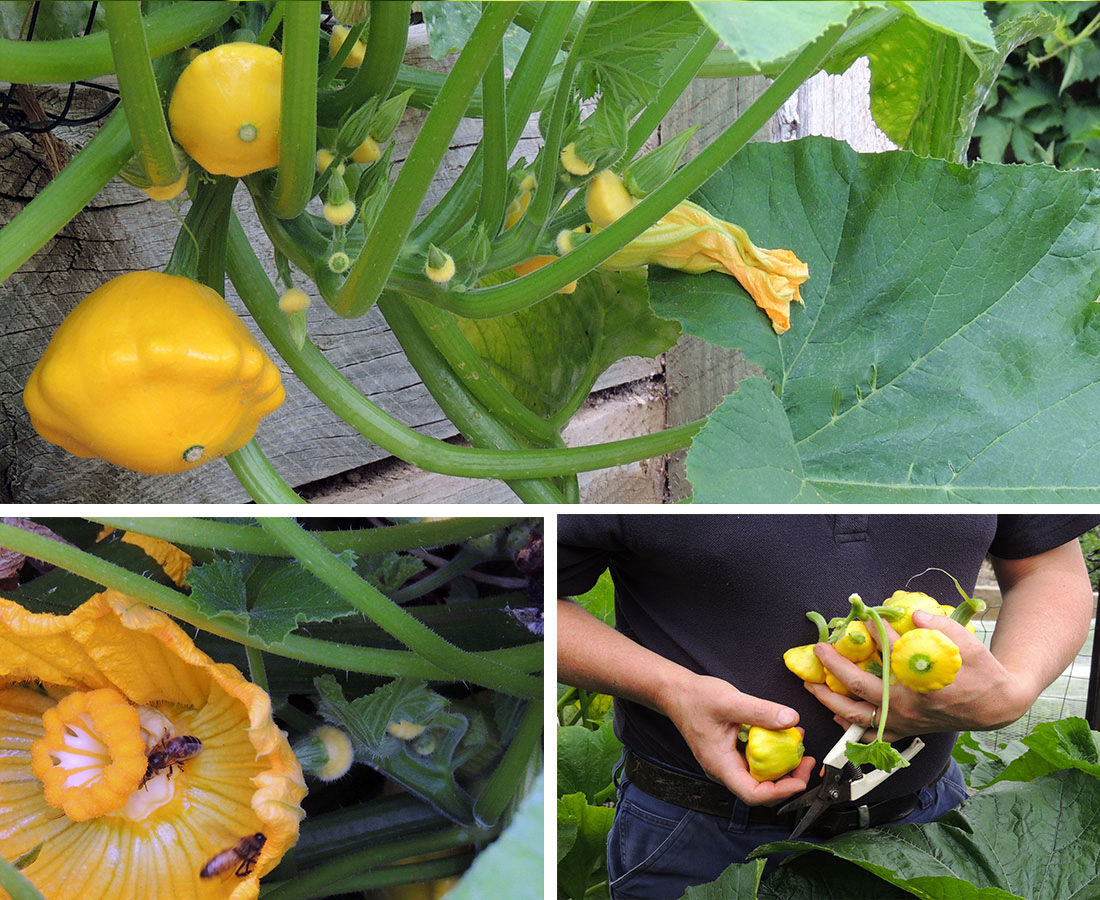
 In the garden I hear Mother Nature’s pollinators - the honey bees - well before I see them. Zooming between the button squash flowers laden with golden pollen accumulated on their hind legs, they spread pollen from the male to the female flowers as they flirt indiscriminately amongst the stamens while searching for their precious staff of life – the nectar.
In the garden I hear Mother Nature’s pollinators - the honey bees - well before I see them. Zooming between the button squash flowers laden with golden pollen accumulated on their hind legs, they spread pollen from the male to the female flowers as they flirt indiscriminately amongst the stamens while searching for their precious staff of life – the nectar.
Do they know the difference between the male and female flowers? That only the male plant produces the pollen and that their primal charge to collect food for the hive is pivotal to our food security? Do they know their most important work is carried out early in the day and that their most productive work rate is temperature regulated; as is pollen viability? Do they know their incessant quest for food fertilises the female flower and within days, the swollen ovary is transformed into an edible vegetable synonymous with summer in Mediterranean and temperate climates?
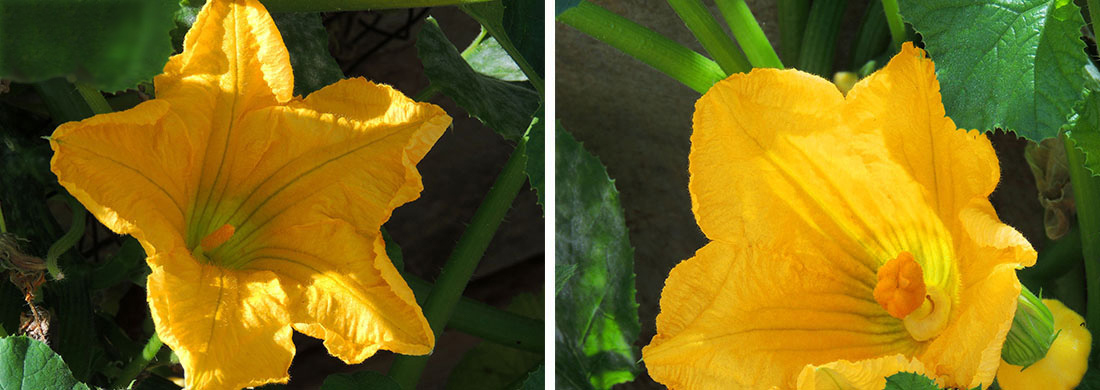 Male Flower - left image : Female Flower - right image
Male Flower - left image : Female Flower - right image
 Probably not, but their endeavour is tireless and thousands of years old. They have been fertilising members of the cucurbita family since before Christopher Columbus discovered pumpkins, zucchinis and button squash in the New World in 1492 and brought them back to the Old World. Known as the Columbian Exchange, the subsequent dispersion of New World foods, which also included turkeys, tobacco, sweet potatoes, peppers, pineapples, beans, peanuts, vanilla, corn, cacao, potatoes and tomatoes through Europe, America and Asia, has had a profound effect on the development of national cuisines and taste preferences.
Probably not, but their endeavour is tireless and thousands of years old. They have been fertilising members of the cucurbita family since before Christopher Columbus discovered pumpkins, zucchinis and button squash in the New World in 1492 and brought them back to the Old World. Known as the Columbian Exchange, the subsequent dispersion of New World foods, which also included turkeys, tobacco, sweet potatoes, peppers, pineapples, beans, peanuts, vanilla, corn, cacao, potatoes and tomatoes through Europe, America and Asia, has had a profound effect on the development of national cuisines and taste preferences.
The humble button squash, botanically classified as a scallop, is just one of eight groups of edible cultivars in the Cucurbtia pepo family which also contains pumpkins, acorns, crooknecks, straightnecks, vegetable marrows, cocozelles and zucchini. Each group produces different shapes, sizes and colours. Pumpkins and acorns differ from the rest as they are grown for the consumption of their mature fruit while the others are celebrated for the immature tender and moist fruit.
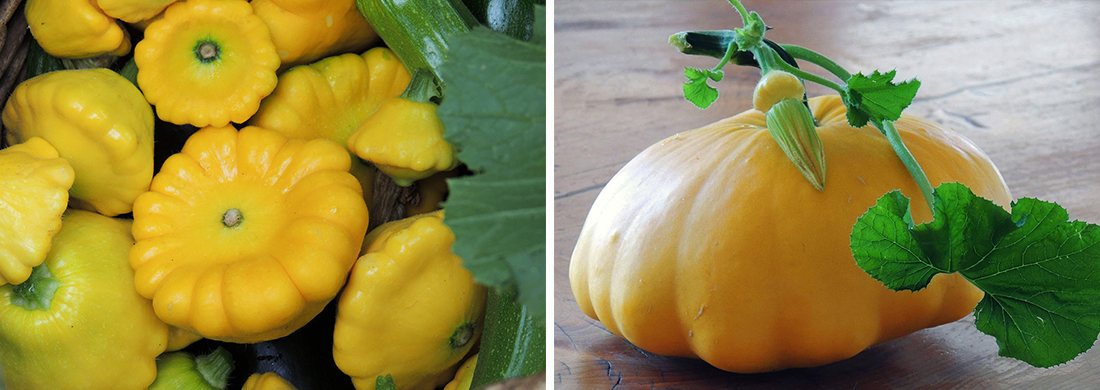
 Button squash thrive in a sunny garden, at least 6 hours of sun is required, and in moist well drained soil. They need lots of space to grow and if compost is added to the soil when they are first planted, they may not need any fertilizer unless their leaves start to yellow during the season. Pick when they are between 5 – 10 cm in diameter while they have a smooth soft glossy skin and this will encourage a endless summer supply of new squash. Store unwashed in a plastic container in the fridge for up to three days. They can be steamed, pan-fried, stuffed and baked or roasted, adding colour, Vitamin C and dietary fibre in every spoonful.
Button squash thrive in a sunny garden, at least 6 hours of sun is required, and in moist well drained soil. They need lots of space to grow and if compost is added to the soil when they are first planted, they may not need any fertilizer unless their leaves start to yellow during the season. Pick when they are between 5 – 10 cm in diameter while they have a smooth soft glossy skin and this will encourage a endless summer supply of new squash. Store unwashed in a plastic container in the fridge for up to three days. They can be steamed, pan-fried, stuffed and baked or roasted, adding colour, Vitamin C and dietary fibre in every spoonful.
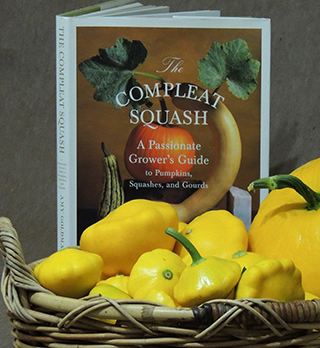
For further inspiration delve into Amy Goldman's botanical treasure trove, The Complete Squash: A Passionate Growers Guide to Pumpkins, Squashes and Gourds.

The Complete Squash Testimonails
'Expertly written and exquisitely photographed, this cornucopia of curcubits will be the definitive guide to pumpkins, squashes , and gourds for decades to come'
Michael Weishan, host PBS's The Victory Gardens , and gardening editor, Country Living magazine.
'With The Complete Squash, Amy Goldman has set new standards for books written on heirloom vegetables and heritage gardening - breathtakingly elegant, playful, historically accurate , and rich in stories. This is a delicious masterpieces'.
Gary Paul Nabhan, Ph.D., seed conservationist and author of Why Some Like it Hot: Foods, Genes and Cultural Diversity

